Get Ready to Be Amazed! 5 Tips for Growing Mammoth Sunflowers
SunflowersThere are sunflowers, and then there are SUNFLOWERS! Mammoth sunflowers are the king of sunflowers. These are the sunflowers to grow if you are looking to impress your kids, the neighbors, or even the squirrels.

Mammoth Sunflowers are an heirloom variety that originated in North America. They are prized for their enormous head that can grow up to 14 inches across. The stalks of these sunflowers can grow up to 12 feet tall and are as wide as a small sapling. The thick stems support the weight of the heavy head full of delicious sunflower seeds. If you want an amazing sunflower that towers over the garden and has a large harvest of seeds to eat, plant Mammoth Sunflower Seeds.
How to Plant Mammoth Sunflower Seeds
Sunflowers are one of the easiest flowers to grow. And the same holds true for Mammoth Sunflowers. However, because of their size, there are a few tips you’ll want to know to ensure an impressive harvest of sunflower seeds.

Tips for Growing Mammoth Sunflowers from Seeds
1. Sun - Mammoth sunflowers love the summer sunshine and need a location with full sun. Six hours of direct sunlight is the minimum. But for the biggest growth possible, try for 8 hours. Another thing to consider is that these giant sunflowers can easily shade out other plants. So take this into consideration when deciding where to plant sunflowers in your garden.
2. Soil - Mammoth sunflowers don’t really need great soil, but they will grow better with plenty of nutrients. Start with nutrient-rich soil that is warm. The ideal soil temperature for sunflower seed germination is between 70º and 75ºF. A pH of 6.0 to 7.5 is optimal. Keep weeds out so they aren’t competing with your flowers for water and nutrients. Sunflowers don’t usually need fertilizer. But if you want to give mammoth sunflowers even more of an edge, you can add extra compost and a slow-release fertilizer. Sunflowers have long taproots, so water deeply and not too often. Let the soil dry out between watering, which will encourage the taproot's deep growth.
3. Space - As their name suggests, mammoth sunflowers are giant! They need plenty of room to grow and reach their full potential. They will have smaller heads if close together. When planting mammoth sunflower seeds, space them at least 18” apart. You can thin them even further to 36” apart. Mammoth sunflowers only have one flower per stalk, so there won’t be side branches.
4. Support - Mammoth sunflowers can get heavy and knocked down in a windstorm. But they do grow a very strong stalk that can support the big flower head. It’s just a matter of the wind hitting the sunflower plant at the right angle to knock them over and expose the roots. If this happens, sometimes you can prop the stalk up and get the roots back in the earth so the sunflower can continue growing. However, sometimes the upheaval has damaged the roots too much. You can use staking and support methods used in flower farms, such as row strings and fencing. Put in any supports before the roots get set since putting in something later could break the roots.
5. Seed - Save the seeds for eating! Mammoth sunflower seeds are the kind that you want to save. When Mammoth sunflowers are young, their flower heads will turn east in the morning and follow the sun across the sky. But as these giant sunflowers grow, their heads get heavier with seeds and eventually stop moving. When their flower heads droop down, it is a sign that the seeds are maturing.

Sowing Mammoth sunflower seeds outdoors
Mammoth sunflower seeds are simple to sow directly into the ground outdoors.
Plant seeds 1” deep. Sunflower seeds don’t need light to germinate; this depth will keep them away from birds.
Put netting over the seeds until they are sprouted to keep birds and other animals from eating them.
Plant 2 to 3 seeds per spot in case one gets eaten. Once they have sprouted, thin out to keep the strongest plant.
Plant seeds 1 inch deep after all danger of frost has passed.
Keep soil moist but not soggy.
Sunflower seeds germinate in 7 to 14 days.
Mature sunflower plants prefer drier conditions.
How to germinate mammoth sunflower seeds indoors.
You can also start mammoth sunflower seeds indoors to get an earlier start on the season and to protect seeds and seedlings.
Once the sunflower seeds sprout, they must be planted outside in 2 to 3 weeks. Sunflowers have a long taproot that can quickly reach the bottom of the pot and then become stunted. Using biodegradable pots will make transplanting easier on the roots.

Harvesting Mammoth sunflower seeds for eating.
Harvesting sunflower seeds is the delicious part of growing Mammoth sunflowers.
The sunflower seeds will be white as they grow. At this point, they are soft and not fully developed. But birds and squirrels will be interested in this delicious treat, and if you want to save some for your own eating, you will need to protect the seeds. You can cover the flower heads with mesh cloth or paper bags.
When the seeds are close to being mature, the petals covering them will begin to fall off, and the flower head will droop down instead of following the daily path of the sun across the sky. Also, the green back of the head will start turning yellow. Eventually, the seeds will start to loosen when they are fully ready.
Fully mature Mammoth sunflower seeds will be black and grey striped.
You will want to leave the heads on the stalk so that the seeds can fully develop. But sometimes, you must get them inside before they freeze or protect them from animals.
When the seeds start to mature, you can cut the stalk and hang the seed heads to dry.
To dry them indoors, cut a foot below the head and hang them upside down to dry.
The stalks of mammoth sunflowers can get very wide and aren't easily cut down. Sometimes loopers or a small tree trimming saw are needed to cut them down.
Store the sunflower heads in a place out of direct sunlight with plenty of dry airflow. And make sure mice and birds can't reach them. This drying process can take a couple of weeks.
To get the seeds off the seed head, hold the seed head over a bowl or bucket and rub your hands across the seeds. (You may want to wear gloves) If the seeds don't release easily, they need to dry longer. However, the seeds mature from the outside edges inward. Often times the innermost seeds won't fully develop. But these immature seeds can be shared with the birds. Just place the seedhead back outside and let the birds have a tasty snack.
Mammoth sunflowers seeds can be eaten raw or roasted.
If you want to roast your mammoth sunflower seeds, soaking them in salt water before roasting gives them a nice salty taste. Roast the seeds for 10 minutes at 400ºF if soaked. Roast at 320ºF for 5 minutes if they haven't been soaked.
If you are keeping seeds to plant for next year, let them completely dry before storing them. But don't roast them!!
Mammoth sunflowers are a fun flower to grow. You’ll be amazed at the height of these plants and the colossal flowerhead. Their size will make you feel like a garden gnome!
Try growing mammoth sunflowers and enjoy a massive harvest of delicious seeds to eat. You'll have plenty to share, even if the birds get a few.
Found this information helpful? Share it with your gardening friends!





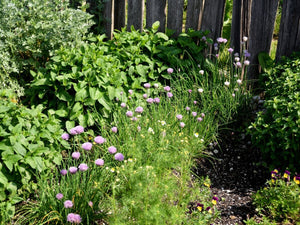

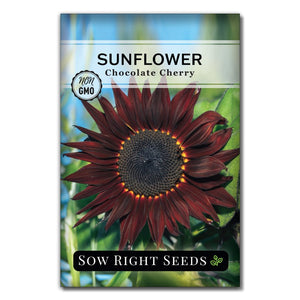
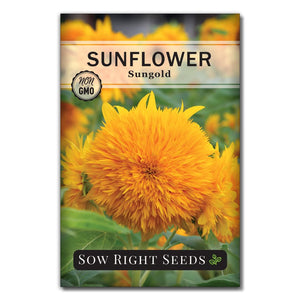
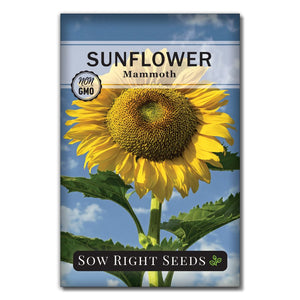
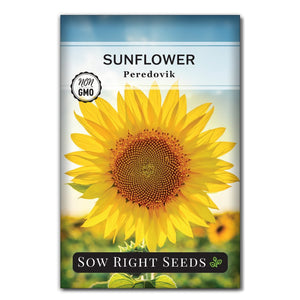
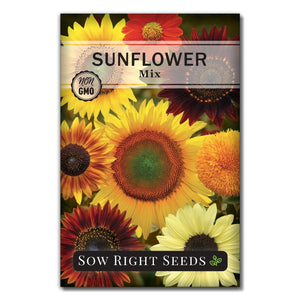
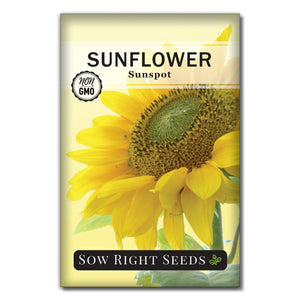
Leave a comment